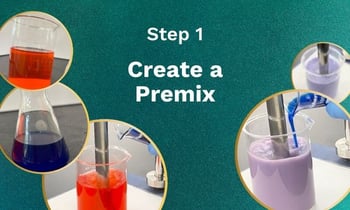The potential applications of nanoemulsions are vast and varied.
- In pharmaceuticals, nanoemulsions can enhance the delivery of active ingredients and improve therapeutic outcomes.
- The nutraceutical industry uses nanoemulsions to create healthier products with an extended shelf life.
- The cosmetics industry utilizes nanoemulsions for products with superior texture and absorption
So, what are nanoemulsions?
Nanoemulsions are mixtures of tiny droplets where one liquid is dispersed evenly throughout another. This is typically oil-in-water or water-in-oil. Due to their small size, nanoemulsions exhibit unique properties such as enhanced bioavailability, improved stability, and increased solubility, making them critical in the pharmaceuticals, nutraceuticals and cosmetics industries.
Creating Stable Nanoemulsions
Stability is key when it comes to nanoemulsions. An unstable emulsion will separate over time, leading to uneven particle distribution and compromised effectiveness of the finished product. Microfluidics has played a pivotal role in providing the means to ensure the consistency and stability of nanoemulsions by designing equipment that can provide precise control over droplet size and uniformity.
Nanoemulsion Processing
Microfluidics offers superior technology for creating stable nanoemulsions. The process is straightforward and involves creating a coarse premix, priming of the machine and simple efficient processing, which ends with a clear demonstration of results. Microfluidics offers a wide range of equipment from benchtop to production-scale to suit your nanoemulsion production needs.

Step 1: Create a Premix
To form a nanoemulsion, first prepare a premix (or coarse emulsion) by blending the aqueous phase with the oil phase using a high-shear mixer. Once the premix appears mixed, it is ready for further processing with the Microfluidizer® Processor.

Step 2: Priming of the Microfluidizer® Processor
Before converting the premix into a nanoemulsion, it is essential to prime the processor to ensure uninterrupted and smooth operation. If temperature regulation is necessary for the process, ensure the ice bath is filled to capacity. Fill the product inlet reservoir with deionized water and initiate the priming process by pressing the inlet check valve until no air bubbles are visible exiting the valve.

Step 3: Processing
Once the premix and Microfluidizer® processor is ready, you can begin processing the material. The number of passes through the machine can be multiple and can be adjusted until the desired result is achieved.

To learn more about our approach, contact us directly.
Related reading:
- Vaccine production systems for scalable vaccine adjuvant development
- From the lab to mass production: scaling up vaccine manufacturing
Learn more about our precision-engineered high pressure homogenizers liquid processing equipment:
Posted by
Matt Baumber
